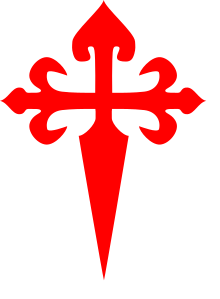Juan de Borja y Castro facts for kids
Juan de Borja y Castro (born in 1533 in Bellpuig, died on September 3, 1606, in El Escorial) was an important Spanish nobleman. He came from the famous House of Borja and the House of Castro families. Juan was a brave soldier, a clever diplomat, and a dedicated worker for the Spanish government. He is best known for being the first Count of Mayalde and also a count in Portugal, called Count of Ficalho.
Contents
Biography
His Family and Early Life
Juan was the third son of Francisco de Borja, who was the 4th Duke of Gandía and later became a Catholic saint. His mother was Leonor de Castro. Juan was born in Bellpuig because his father was working there for King Charles I at the time.
Between 1539 and 1543, Juan lived with his family in Barcelona. This was when his father was the Viceroy of Catalonia, which meant he was like a governor. Juan later moved to Gandía when his father became the duke.
Juan studied with the Jesuits at the Universidad de Gandía. In 1548, he joined the Order of Santiago. This was a special group of knights that was controlled by the Spanish monarchy.
After his mother passed away in 1546, Juan went with his father to Rome in 1550-51. His father was going to join the Jesuits there. They returned to Oñati, and from there, Juan went to study at the famous University of Alcalá.
Diplomat and Soldier
Juan started working for Philip II of Spain. He was a staff member for Prince Carlos. Then, he became a soldier in Gipuzkoa. Under the command of Vespasiano I Gonzaga, he helped defend the area against the French during the Italian Wars.
His career as a diplomat began in 1569. He was sent to Portugal to take the place of another ambassador. There, he worked to connect the court of Sebastian of Portugal with Margaret of Valois. He tried to convince the Portuguese king not to go on his expedition to Africa. However, the king went anyway in 1578, and it ended very badly.
In 1576, Juan went to Prague. He was the Spanish ambassador to Emperor Rudolph II of the Holy Roman Empire. He stayed in this job until 1581. In that same year, he published his only known book, called "Empresas Morales".
At the Spanish Court
After returning to Spain, Juan was named the head majordomo for María de Austria. A majordomo was a chief household officer. He kept this important job until 1603. To thank him for his service, King Phillip II gave him the title of Count of Mayalde.
When Philip III of Spain became king, Juan became close with the Duke of Lerma, who was his nephew. He was then named Count of Ficalho and became the president of the Council of Portugal. He also joined the important Spanish Council of State.
Death and Legacy

Juan passed away at the age of 73 in September 1606. He had an accident when the special chair he was being carried in (because he had gout) fell down some stairs at El Escorial. His body was first buried in Madrid. Then, in 1613, it was moved to the Church of Saint Roch in Lisbon, Portugal.
Marriage and Children
In 1552, Juan went back to Gandia and married Lorenza de Oñaz y Loyola. She was the niece of Ignatius of Loyola. They had these children:
- Eleanor, who married Pedro de Borja.
- Magdelena, who married John Urban.
- Francisa, who became a nun in a convent.
- Juana, who also became a nun in a convent.
After his first wife died in 1575, Juan married again. His second wife was Francisca de Aragón Barreto. They had these children:
- Francisco de Borja y Aragón, who later became the Viceroy of Peru.
- Antonio de Borja y Aragón, who joined the clergy (became a priest).
- Rodrigo de Borja y Aragón, who died when he was a baby.
- Carlos de Borja y Aragón, who married the Duchess of Villahermosa.
- Fernando de Borja y Aragón, who was the viceroy of Valencia and Aragon.
See also
 In Spanish: Juan de Borja y Castro para niños
In Spanish: Juan de Borja y Castro para niños


